Will Gompertz reviews David Hockney's record-breaking Portrait of an Artist ★★★★★
- Published
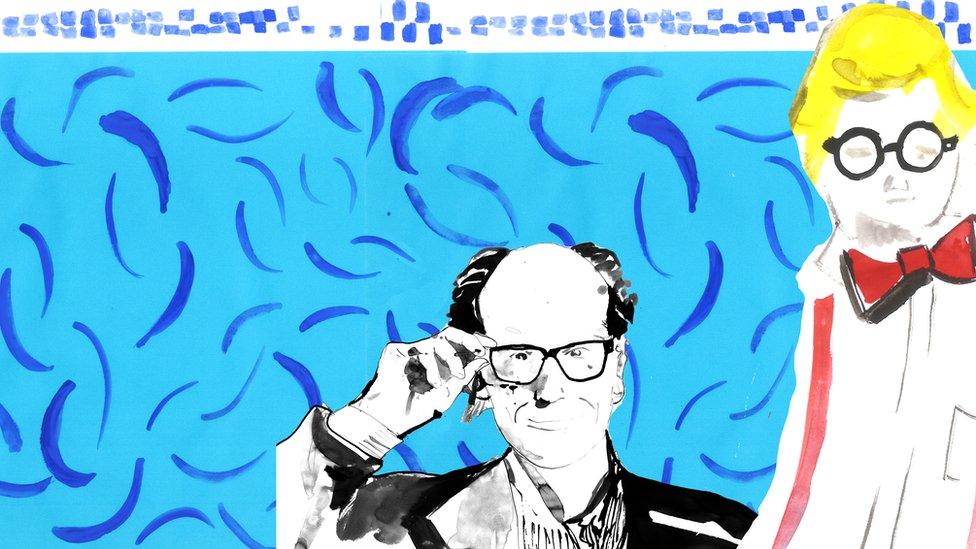
I once asked David Hockney how memorable images are created. "I don't know," he said, "but I've made some."
And so he has.
Not least his 1972 painting, Portrait of an Artist (Pool with Two Figures), which broke the auction record this week for a work by a living artist when it sold for $90m (£70m).
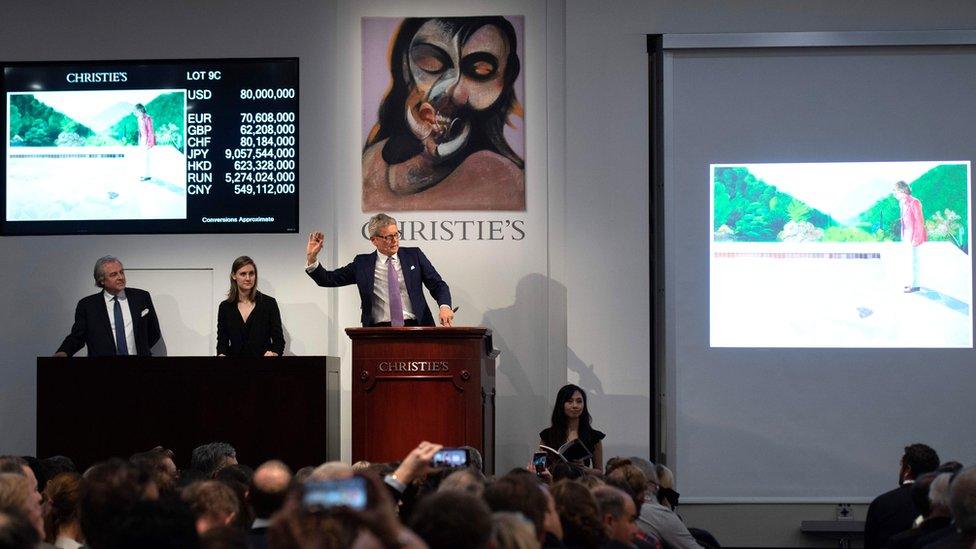
The moment when the Christie's auctioneer asks if the other bidder wants to offer more for David Hockney's Portrait of an Artist (Pool with Two Figures)
The reason it fetched the very high price is fairly easy to comprehend. Portrait of an Artist is widely considered to be one of Hockney's most accomplished paintings, uniting the two career-defining subjects that preoccupied him in the late 60s and 70s: swimming pools and double portraits.
It's a two-for-one.
Plus, it's unique.
And it apparently has excellent provenance. Added to which, at least two people were very keen to own it (you'd need a big wall - it's a 7ft-by-10ft canvas).
And that means the market-driven rules of supply and demand come into play, pushing the price up to such giddy heights. All of which tells us something about the nature of the art market but very little about the art.
So, back to that original question, what makes it a memorable image?
Structure is one factor. It has a geometric formality - squares, rectangles and triangles - that provides a coherent and solid framework in which the more complex effects Hockney wants to capture can be clearly expressed.

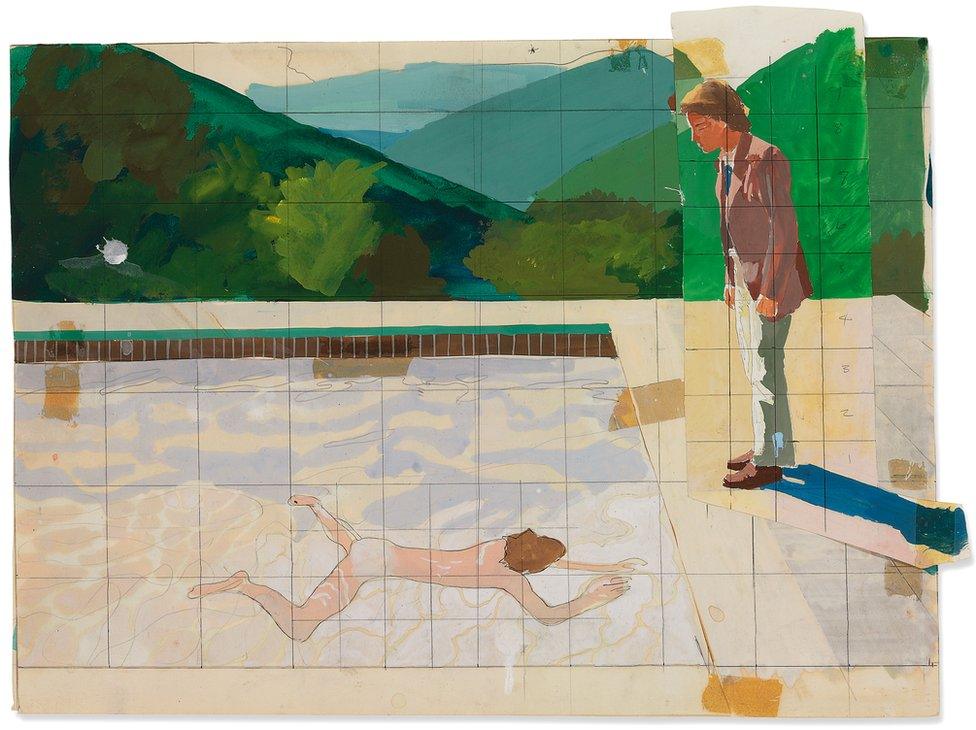
In David Hockney's Study for Portrait of an Artist, 1972, the viewer can see the importance of the geometric structure in the composition

He was particularly interested in evoking in the viewer the sense of looking through a thin film of disturbed surface water, which is one of the reasons why it was so important to have the figure swimming below.
It works.
But it wasn't easy.
Hockney abandoned his first attempt after months of experimenting with different compositional angles, and various technical approaches to applying his acrylic paint.
The water is not the only elemental motif the artist is attempting to convey pictorially. Air and light and temperature are all essential factors in our reading of this contemporary pastoral scene. It is hot and still and clear: An idyllic day for swimming in an idyllic landscape (based on photographs he took in the South of France).
And so our senses are aroused and receptive, while our desire for order is satisfied by the simplicity of geometric shapes.
It's a good start, but it is not what makes Portrait of an Artist a memorable image.
Part of its magic lies in the feeling of space Hockney has created. It sounds like a fairly simple thing to achieve, but it is fiendishly difficult. Ultimately, it requires the artist to paint thin air.
The master of this particular craft was the 15th Century Italian artist Piero della Francesca (1415 - 1492), to whom Hockney owes a large debt. Look at the great Renaissance man's masterpiece The Flagellation of Christ (c.1450s), and you will see where the 81-year-old Yorkshireman found inspiration for his own painting.

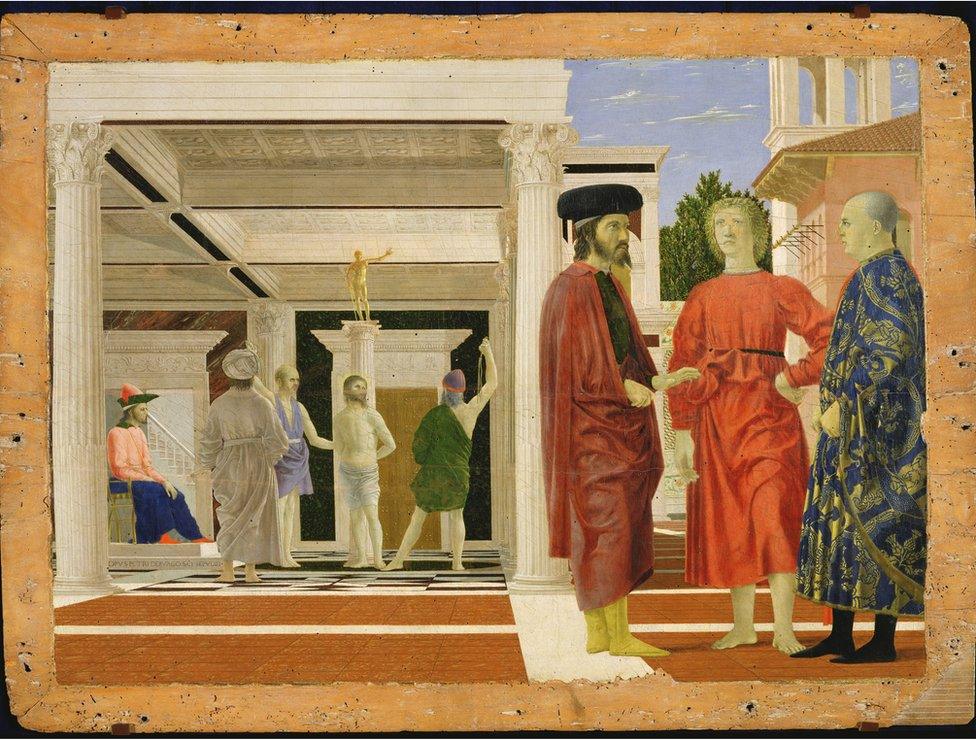
The structure and sense of space in Hockney's work can be traced back to The Flagellation of Christ, painted by Piero della Francesca in the 15th Century

There is that same feeling of space in Piero della Francesca's artwork, the same reliance on an architectural structure (emphasised in both cases with tiled paving), and the same compositional device of having two distinct, non-referring areas in which figures appear.
Both paintings knowingly assert the single vanishing point: the Italian does so with buildings, Hockney uses two Cypress trees and an allusion to Mount Fuji in the background.
That the similarities are so striking only goes to show that the man who became a famous face in the 60s with his gold lamé jacket, bleached blond hair and round glasses is not simply a pop artist, but a serious-minded contemporary painter who is producing pictures that refer back to centuries of image-making, from Fra Angelico to Paul Cezanne and beyond.
Take a good look at those hills in the background of Portrait of an Artist and you will see the Pointillism of Georges Seurat.

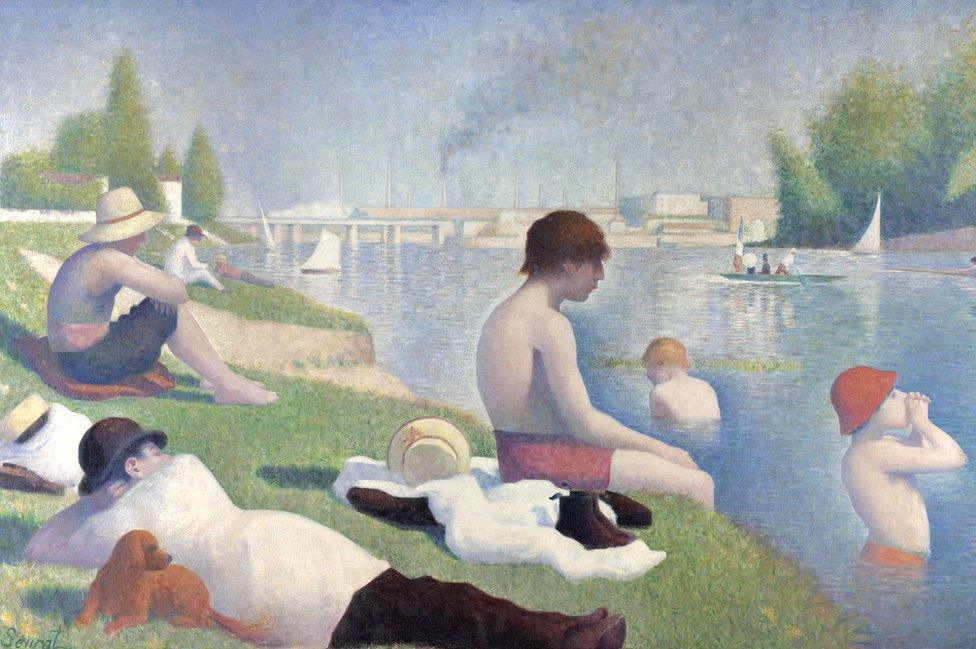
The Impressionist painting technique developed by Georges Seurat (Bathers at Asnières, 1884) is evident in Hockney's work

And note the cropping of the swimming pool to create dynamism, which is reminiscent of Degas, and the bright colours of his high-key palette nod to Matisse.
It is this combination of influences filtered through his temperament and experiences that lend Hockney's painting an air of permanence: it appears at once modern and classical. All of which contributes to making it a memorable image.
But there is one factor above all others that gives the painting its wall-power.
And that is its psychological charge.
Like Edward Hopper's Nighthawks or a Lynette Yiadom-Boakye imagined figure, Portrait of an Artist has an uncanny atmosphere that draws you in.
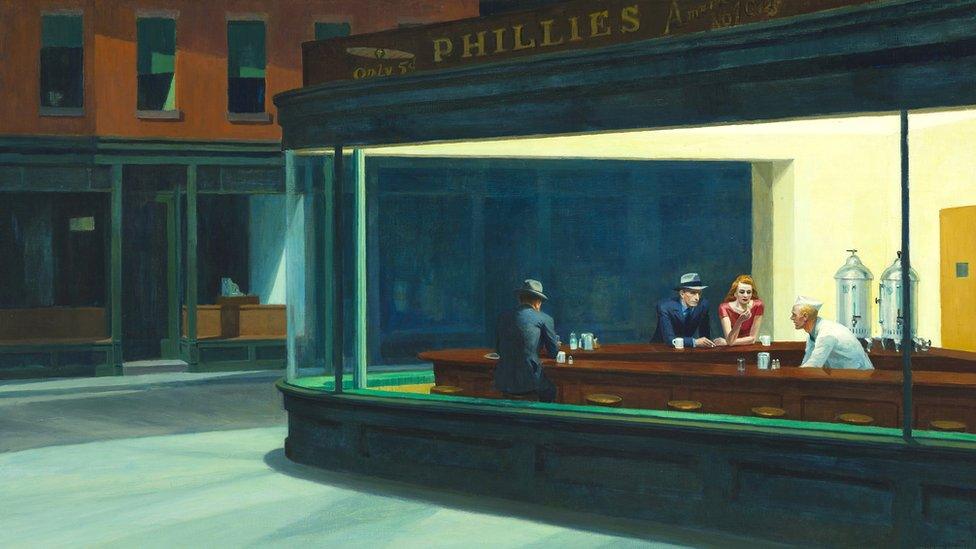
Similar to Edward Hopper's Nighthawks (1942), Hockney's Portrait of an Artist creates a highly-charged atmosphere that draws the viewer into the painting
Who are these two men?
Why are they so detached?
Is it Narcissus peering down at his reflection?
Or are they lovers?
Were they lovers?
Will they become lovers?
What is on their minds?

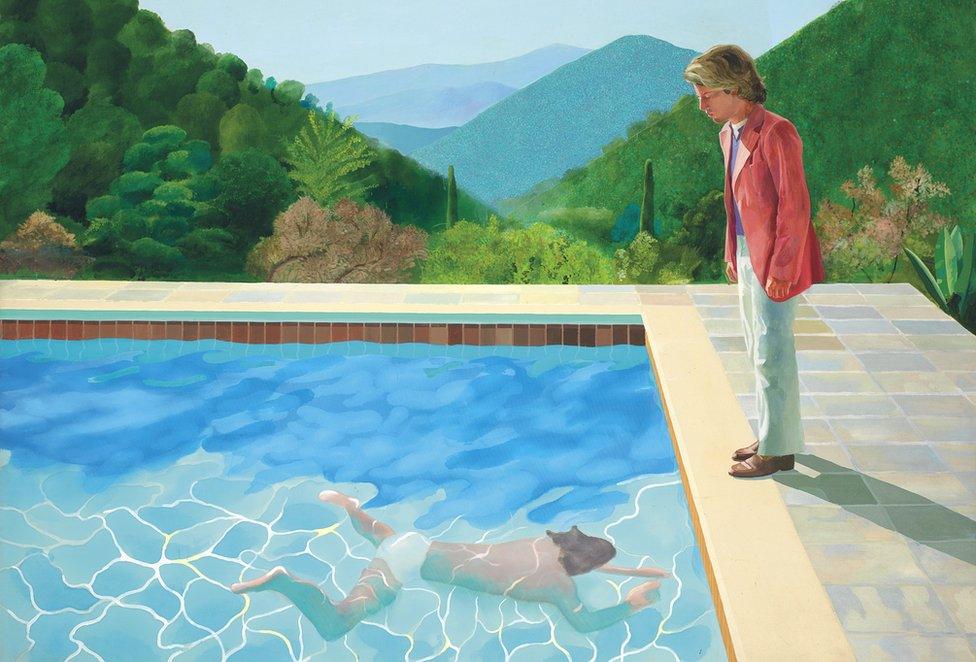
Portrait of An Artist provokes so many searching questions about the two men in the painting

There is an unspoken and unresolved tension between the two figures. They exist in separate worlds. One is vertical and on dry land, the other horizontal and submerged. We can see the face of the standing figure but the man in white swimming trunks is a total mystery.
Even when you know the backstory to the painting the psychological impact remains. It came about when Hockney noticed two random photographs side-by-side on his studio floor (one of a man swimming taken in 1966, the other of a boy looking down) and saw immediately that the combination would make for a compelling composition (the man standing by the pool was eventually modelled on his ex-boyfriend Peter Schlesinger from whom he had recently split).

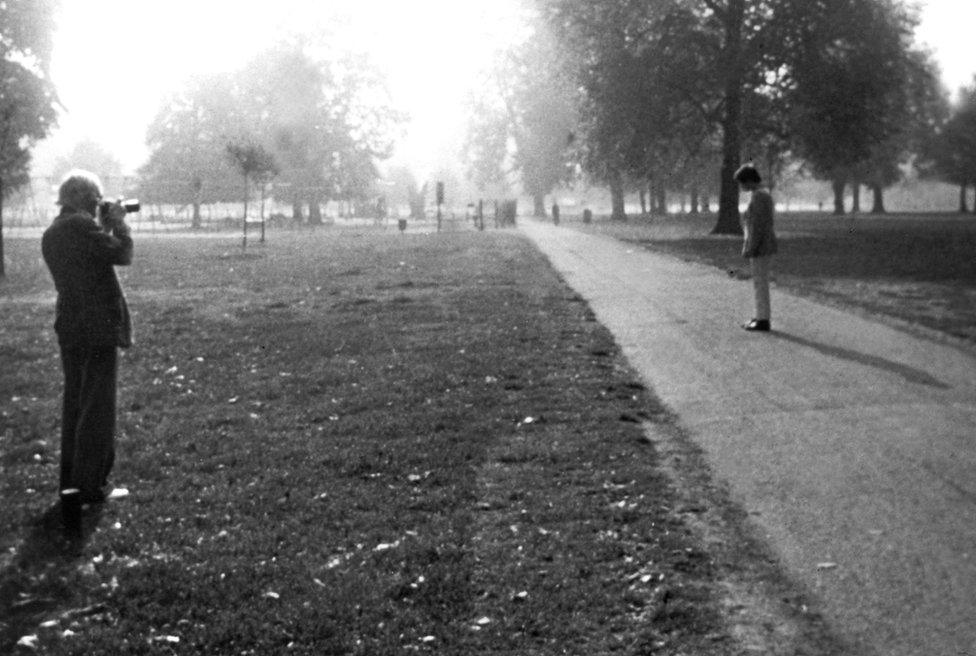
A still from the film A Bigger Splash, which shows David Hockney taking a photograph of his former boyfriend Peter Schlesinger, who was the model for the man standing by the pool

Although the painting is a partly staged collage of multiple sources, it has an inherent authenticity.
It rings true.
There is something in the mood it captures that is universal and relatable and as old as time. Man alone in Arcadia with only his thoughts and memories for company.
It is a beautifully balanced composition that pleases the eye, with a subject - reflection - that gives our minds food for thought.
It plays with our hearts and our heads.
And that is what makes it such a memorable image.
- Published13 October 2018
- Published16 November 2017